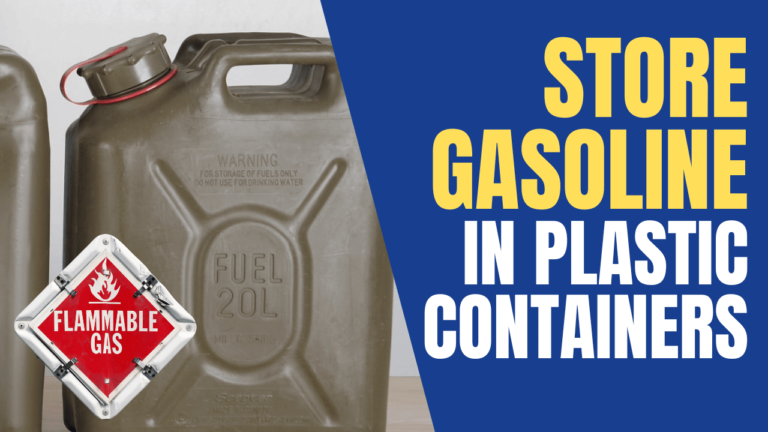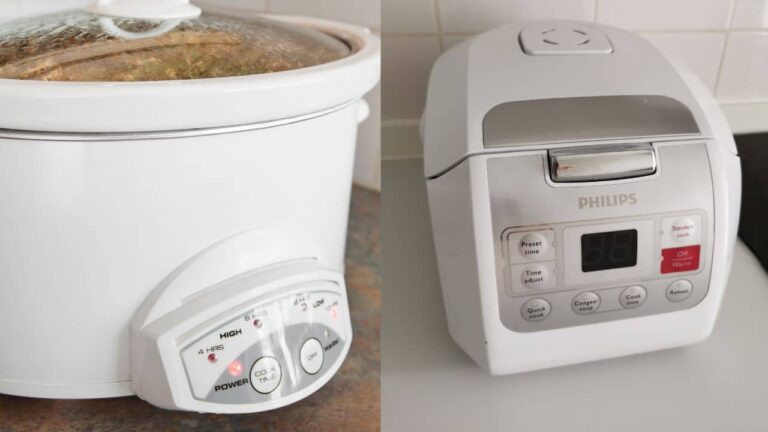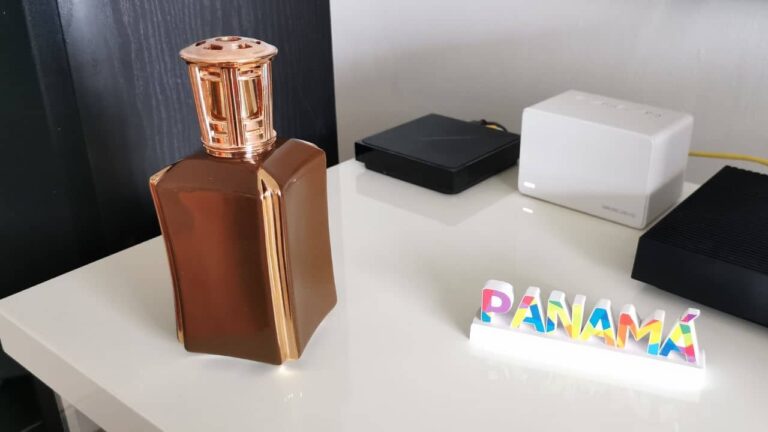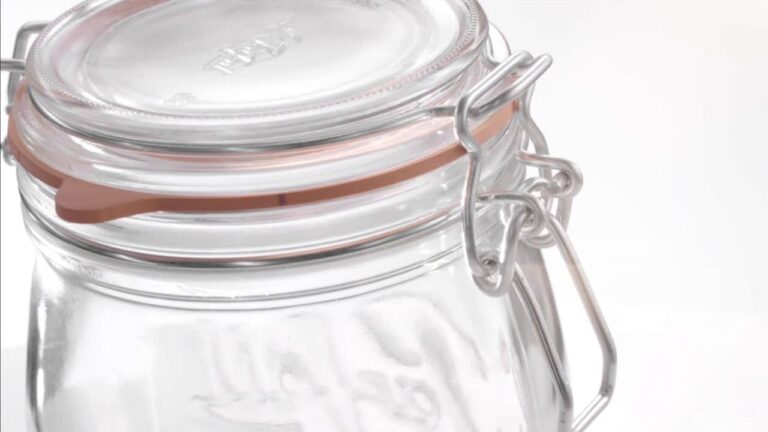How Do You Store Food on a Plane: The Best Ways Explained
Whether it’s domestic or international, packing for a flight can be a hassle. Especially when food and beverages are involved. Learning how to properly store food on your next flight can save you a lot of time at the TSA checkpoint.
You can store your food in both your carry-on bag and checked luggage, provided that you stay under the baggage allowance with the use of ziploc bags, reusable silicone bags, stackable glass jars and beeswax wraps. However, if you’re carrying liquids on board, you are only allowed to bring 3.4oz/100 ml.
This article explains carrying your food, dealing with smells, avoiding spills, and a table that explains what food you can take alone.
Read on to learn the Do’s and Don’ts of packing food for your next flight.
How to Store Food on a Plane? Tips for Your Next Flight
Here’s how you can store food in your carry-on or checked luggage.
How to Store Food in Carry-On?
Most solid foods are allowed in carry-on luggage. However, TSA has a strict liquids rule that needs to be followed when bringing any gel or liquid items on board.
Your solid food can be in any type of packaging. However, for convenience, I recommend smaller packages that can be packed easily.
When packaging materials it’s important to consider that the packaging is light, durable, and can prevent any stains or spoiling in your baggage. You can consider bags, jars or reusable food wraps, and such as:
- Ziploc Bags
- Reusable Silicone Bags
- Stackable, glass jars
- Beeswax wraps for fresh pastries and sandwiches
Important Details
Since you have to keep your carry-on with you at all times, overpacking food in it may become inconvenient as it can leave less space for your other items.
When packing liquids you have to be mindful of the quantity you are bringing. Your liquids or gels must be in containers that are 3.04 oz (which is 100 ml) or less. If your container is bigger than this size it will be thrown out, no matter what the quantity of liquid inside.
All of your 3.04 oz containers should fit inside a 1 quart, resealable bag. Each passenger is only allowed 1 resealable bag.
Also, it’s important to organize your carry-on bag and leave it uncluttered as TSA agents may ask you to remove various items during screening.
How to Store Food in Checked Baggage?
Checked baggage is free from the scrutiny that carry-on bags face. Checked baggage doesn’t have rules regarding the quantity or packaging of liquids and can be a safe bet if your food is in the gray area between solid and liquid.
So if you’re bringing your mother’s home-baked peach pie home after Thanksgiving dinner, I say: Check it.
It’s important that your food is securely packed inside the bag. Checked baggage is often manhandled and may even end up under a huge pile of (really heavy) suitcases. I recommend using proper plastic or aluminum containers.
Pack fragile items- such as cookies- in proper tins or jars and place them snugly inside clothing. This way, the items inside the jars won’t move around a lot during turbulence and therefore won’t break (especially if the containers are made of glass).
If you are planning to transport frozen or cold food, ensure that they are in a separate section. You can use materials such as cooler bags or isothermal lunch bags with ice packs to keep them insulated.
Tips:
- Try waiting till the last minute to take out ice packs from freezers to ensure maximum coolness.
- When packing liquids or gel items, try wrapping multiple layers around them to prevent spilling.
Note: When adding food to your checked-in luggage, it’s important to remember that your luggage may end up being delayed or lost. In this case, the food items in the baggage may spoil and create a mess.
How to Deal with Smells, Spills, and Spoiling?
During long flights, certain food items are at risk of going bad or start smelling. Let’s see how we can cope with this.
Minimizing Smells
When packing your food into your checked luggage, always seek to minimize smells. Your food will be sitting with the rest of your luggage for a considerable amount of time and any smells may end up seeping into your clothes.
Make sure your food items are packed in containers or sealed plastic bags so that the smell doesn’t come out. You can even package it multiple times for added protection.
For carry-on luggage, try avoiding particularly smelly food. Your food may cause the entire cabin to smell and may lead to an unpleasant experience for everyone.
Avoiding Spills
To avoid spills, it’s best to pack your food in spill-proof tupperware container. You can even wrap it in a plastic bag to ensure nothing leaks onto your surrounding luggage.
To prevent your item or container from breaking, try placing it in the middle of the bag amidst clothes. This will cushion the food and prevent it from being jostled around.
If you’re planning on bringing any spillable liquid on board, it’s best to use a proper container. The resealable quart bag will act as a barrier of protection between your food and the rest of your luggage.
Preventing Your Food From Spoiling
If you’re bringing any fresh or frozen foods, it’s important to store them properly so that they do not get spoiled.
Store your food with ice or gel packs to keep it cool for longer. Try taking the packs out of the freezer at the last possible minute so that they last.
You can also use dry ice to keep your products cold. However,dry ice is subject to a 5 pound limitation as well as other regulations that you have to follow.
You should note that many times delays may have your food checked for longer than you initially thought, leading to spoilage. Moreover, checked baggage may be lost or delayed before it reaches you.
Keep at The Right Temperature
Some food items may need to be kept at a proper temperature while flying, especially cold or frozen foods.
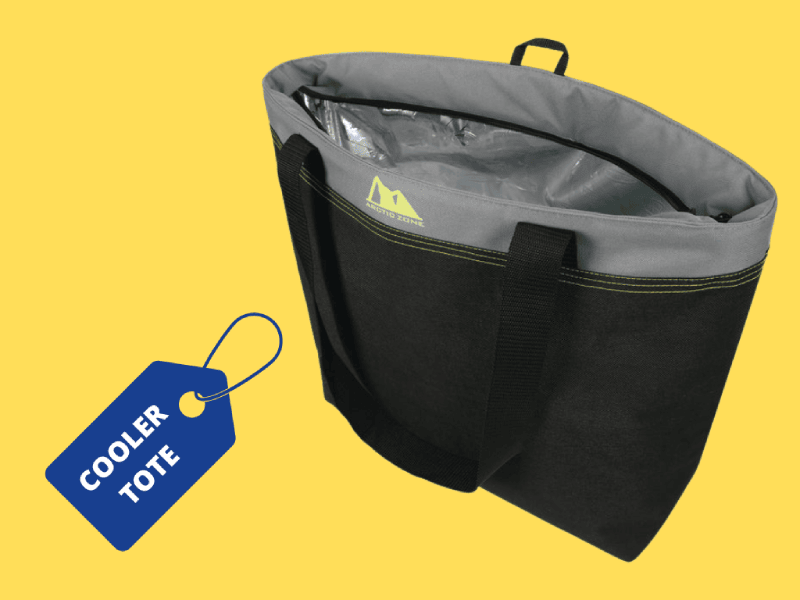
To keep all of your items at the exact temperature, use cooler bags or isothermal lunchboxes. These items create an insulating layer around your food items and maintain temperatures for longer times, reducing the need for ice packs or other cooling agents.
What Kind of Food Can You Take on a Plane in 2022? (Carry-on and Checked Bags)
You can take almost any food on the plane with you, as TSA doesn’t prohibit the types of food. However, there are strict regulations on the quantities you can take on board.
Read the table below to find out which foods are allowed, and in how much quantity.
| Type of Food | Carry On Bags | Checked Bags |
|---|---|---|
| Baby Food | Yes | Yes |
| Baby Formula | Yes (Special Instructions) | Yes |
| Bottled Water | Yes (less than 3.4oz/100ml) | Yes |
| Bread | Yes | Yes |
| Breast Milk | Yes (Special Instructions) | Yes |
| Candy | Yes | Yes |
| Canned Food | Yes | Yes |
| Cereal | Yes | Yes |
| Cheese (Creamy) | Yes (Less than 3.4oz/100 ml) | Yes |
| Cheese (Solid) | Yes | Yes |
| Chocolate (Liquid) | Yes (Less than 3.4oz/100 ml) | Yes |
| Chocolate (Solid) | Yes | Yes |
| Coffee (Beans or Ground) | Yes | Yes |
| Coffee (Liquid) | Yes (Less than 3.4oz/100 ml) | Yes |
| Coffee Thermos (empty) | Yes | Yes |
| Cooked Meat. Seafood and Vegetable (No Liquid) | Yes | Yes |
| Cookies | Yes | Yes |
| Crackers | Yes | Yes |
| Creamy Dips and Spreads | Yes (Less than 3.4oz/100 ml) | Yes |
| Dried Fruits | Yes | Yes |
| Fresh Eggs | Yes | Yes |
| Fresh Fruits and Vegetables | Yes | Yes |
| Fresh Meat and Seafood | Yes | Yes |
| Frozen Food | Yes (If com) | Yes |
| Gel Ice Packs | Yes (when completely frozen) | Yes |
| Gravy | Yes (Less than 3.4oz/100 ml) | Yes |
| Gum | Yes | Yes |
| Honey | Yes (Less than 3.4oz/100 ml) | Yes |
| Hummus | Yes (Less than 3.4oz/100 ml) | Yes |
| Ice Cream | Yes (Less than 3.4oz/100 ml) | Yes |
| Jam and Jelly | Yes (Less than 3.4oz/100 ml) | Yes |
| Juice for Babies | Yes (Special Instructions) | Yes |
| Juice | Yes (Less than 3.4oz/100 ml) | Yes |
| Live Lobster | Check with Airline | Yes |
| Maple Syrup | Yes (Less than 3.4oz/100 ml) | Yes |
| Nuts | Yes | Yes |
| Oils and Vinegar | Yes (Less than 3.4oz/100 ml) | Yes |
| Peanut Butter | Yes (Less than 3.4oz/100 ml) | Yes |
| Pet Food (Solid) | Yes | Yes |
| Pet Food (Wet) | Yes (Less than 3.4oz/100 ml) | Yes |
| Pies and Cakes | Yes | Yes |
| Pizza | Yes | Yes |
| Protein or Energy Powders | Yes | Yes |
| Salad Dressing | Yes (Less than 3.4oz/100 ml) | Yes |
| Salsa and Sauces | Yes (Less than 3.4oz/100 ml) | Yes |
| Salt | Yes | Yes |
| Sandwiches | Yes | Yes |
| Snack Bar | Yes | Yes |
| Snacks | Yes | Yes |
| Soda | Yes (Less than 3.4oz/100 ml) | Yes |
| Solid Foods | Yes | Yes |
| Soups | Yes (Less than 3.4oz/100 ml) | Yes |
| Spices (Dry) | Yes | Yes |
| Tea (dry tea bags or loose tea leaves) | Yes | Yes |
| Water for Babies | Yes (Special Instructions) | Yes |
| Yogurt | Yes (Less than 3.4oz/100 ml) | Yes |
TSA’s “3-1-1” Rule for Liquids
The closer your food is to a liquid, the more scrutiny it faces.Your food may be classified as a liquid or gel if the item can:
- Spill
- Spread
- Spray
- Pour
- Pump
This is why food items such as honey, jams, and even peanut butter are classified as liquid and have special instructions regarding them.
TSA has a special 3-1-1 rule regarding liquids that passengers bring in their carry-on bags.
- 3: All Liquids must be in containers of 3.04 oz/100ml or less
- 1: All of the different bottles must fit in one quart-sized bag
- 1: Each passenger can only have one such bag
If the liquids you bring on board don’t follow the 3-1-1 rule, they may be removed from your carry-on baggage at the TSA checkpoint.
It’s also important to be aware of the size of the containers you’re bringing because if the size is greater than the one specified, the container will be removed. For example, if you have a jar of honey that is bigger than 3.04 oz (100 ml) even if the quantity of honey is less than that, the jar will be removed from your baggage.
Do note that this rule is specific to TSA’s ‘3-1-1’ rule.
Special Instructions for Baby Food, Breastmilk, and Baby Formula
Baby food, formula, toddler drinks, and breast milk are generally considered liquids that are medically necessary. Due to this, these items are allowed in quantities greater than 3.04 oz or 100 ml and don’t need to fit into a quart-sized bag.
You may have to inform your TSA officer that you are carrying these items before your screening. These items will have to be removed from your carry-on luggage to be screened separately and may be tested for explosives or any other prohibited items.
TSA testing will not negatively affect baby food. However, if you don’t want your baby food to be X-rayed, you can inform the TSA officer. This may lead to additional screening procedures for you and your luggage.
Whenever possible, use clear translucent bottles to carry baby formula or breast milk so that it is easier to screen. Avoid plastic pouches as you may be required to open them if the liquid can’t be scanned properly.
What Food Cannot Be Taken on a Plane?
Any liquid that doesn’t follow the 3-1-1 rule is not allowed in carry-on luggage. This includes all liquids including spreads, jam, honey, ketchup, and any other condiment or sauce. A liquid or gel that doesn’t follow the rules will be thrown out.
If you’re unsure about a liquid following TSA’s rules, pack the item into your checked baggage to avoid hassle at TSA checkpoints.
Alcoholic beverages above 140 proof (70% alcohol) are prohibited from both checked-in bags and carry-on bags. If your alcohol is below 140 proof and follows the 3-1-1 rule you may be allowed to board with it. However, there are many airlines that won’t allow you to drink on board.
Ice packs and gel packs are not allowed on planes if they have melted and have any amount of liquid inside. Canned food with high liquid content may also be thrown out for not complying with the 3-1-1 rule.
Note: Passengers that are flying from Hawaii, Puerto Rico, or the U.S. Virgin Islands to the U.S. mainland aren’t allowed to take most fresh fruits and vegetables since they risk spreading invasive plant pests.
Final Thoughts
Airlines have strict rules that passengers must obey, otherwise, the authorities have the right to act accordingly. Always ensure you’re following the airline’s conduct and rules.
I hope my detailed guide that explains how to store food properly on a plane helps you on your next flight. And feel free to share your own experience and other tips with me.
Safe travels!
Source
- TSA: What Can I Bring


